Abstract
Adoptive transfer of spleen cells obtained from mice primed with Japanese encephalitis virus (JEV) suppressed IgM antibody plaque forming cells (PFC) against JEV in the spleen. Similar suppression of PFC was also shown in vitro by adding primed spleen cells to JEV-stimulated spleen cell cultures. The suppressor activity appeared sharply in the third week after priming and persisted up to 6 weeks. By using various cell separation procedures it was found that the suppressor activity resided in the T cell enriched fraction and not in B cells or macrophages. Sensitivity of the cells to treatment with anti-Thy 1.2 antiserum and complement confirmed that suppressor cells were T lymphocytes. It was noted that the suppression was effective against dengue virus antigen also. Our findings thus show generation of suppressor T lymphocytes in JEV-infected mice.
Full text
PDF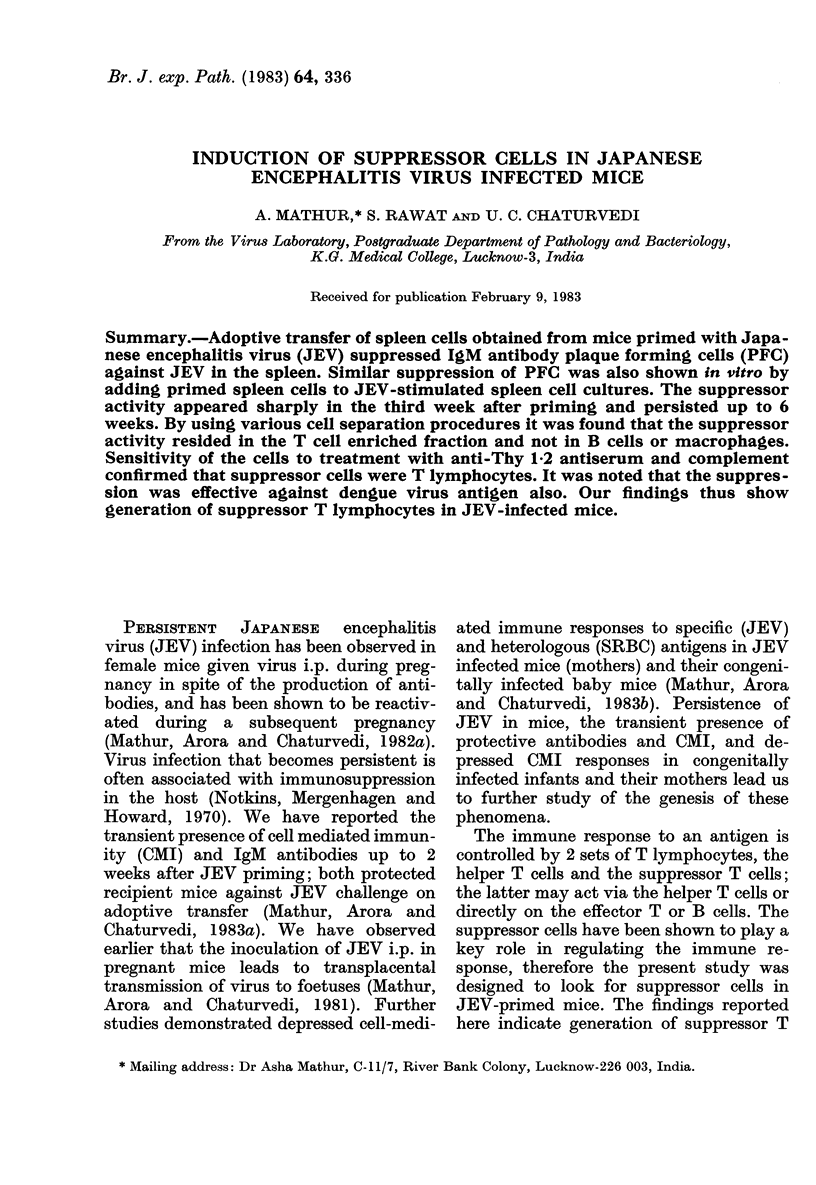
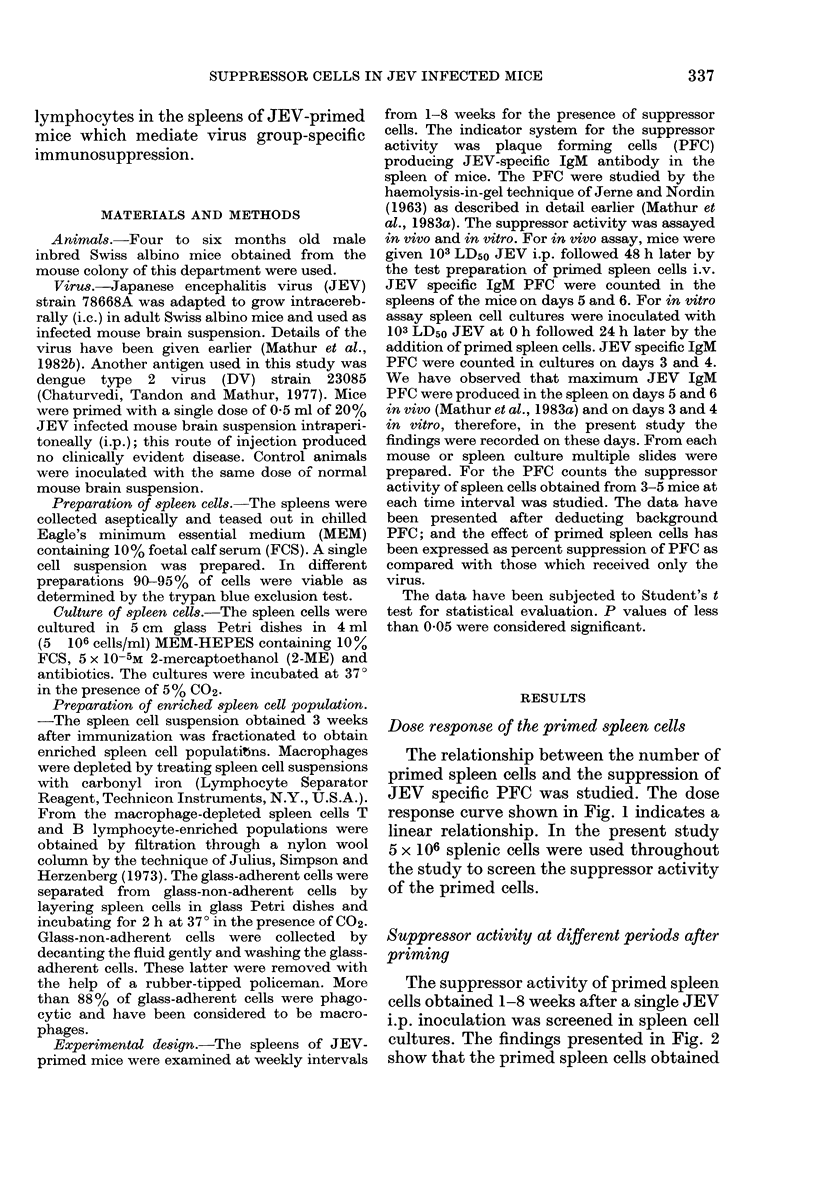
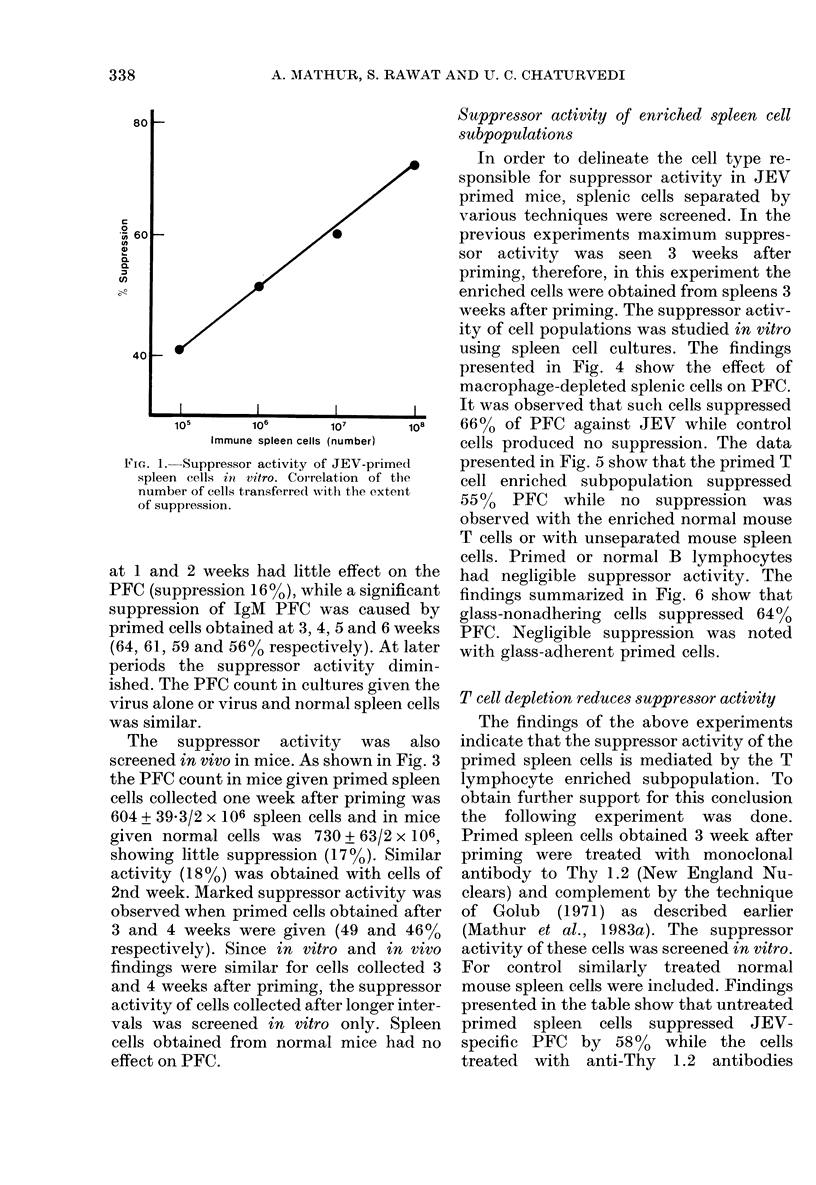
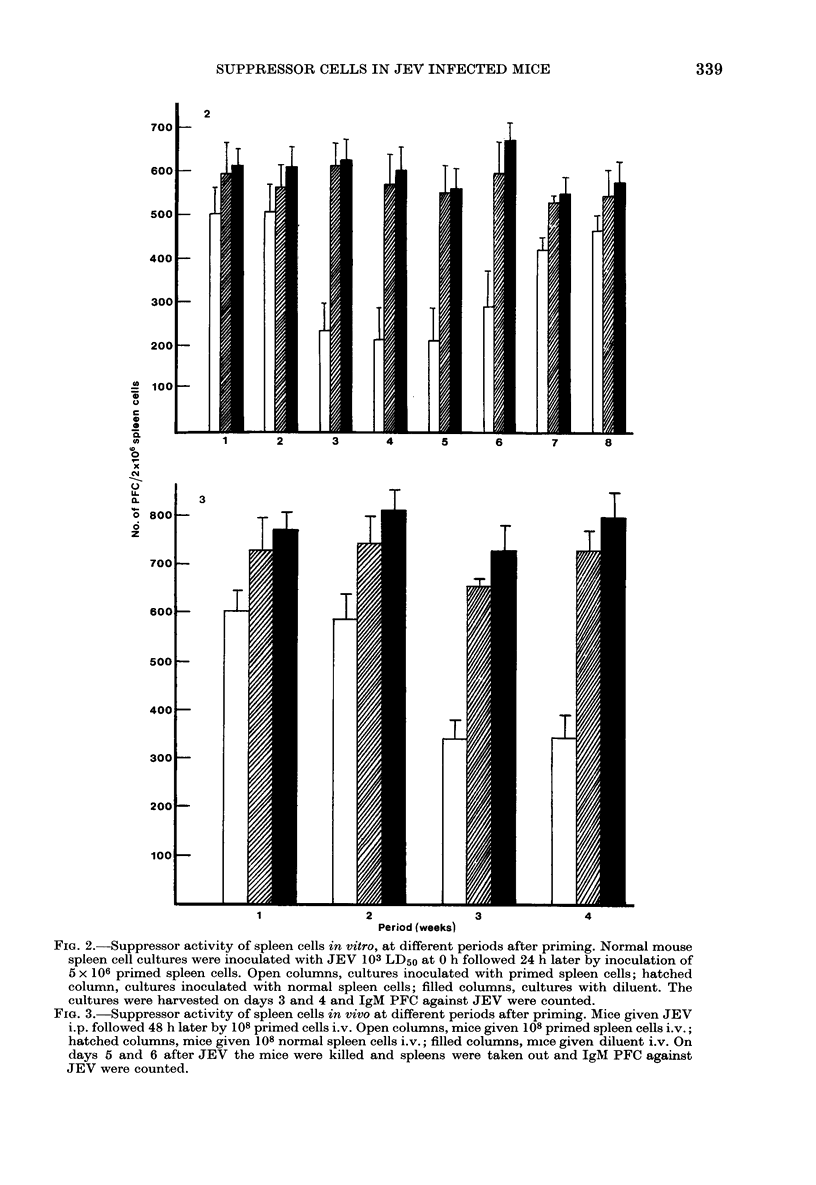
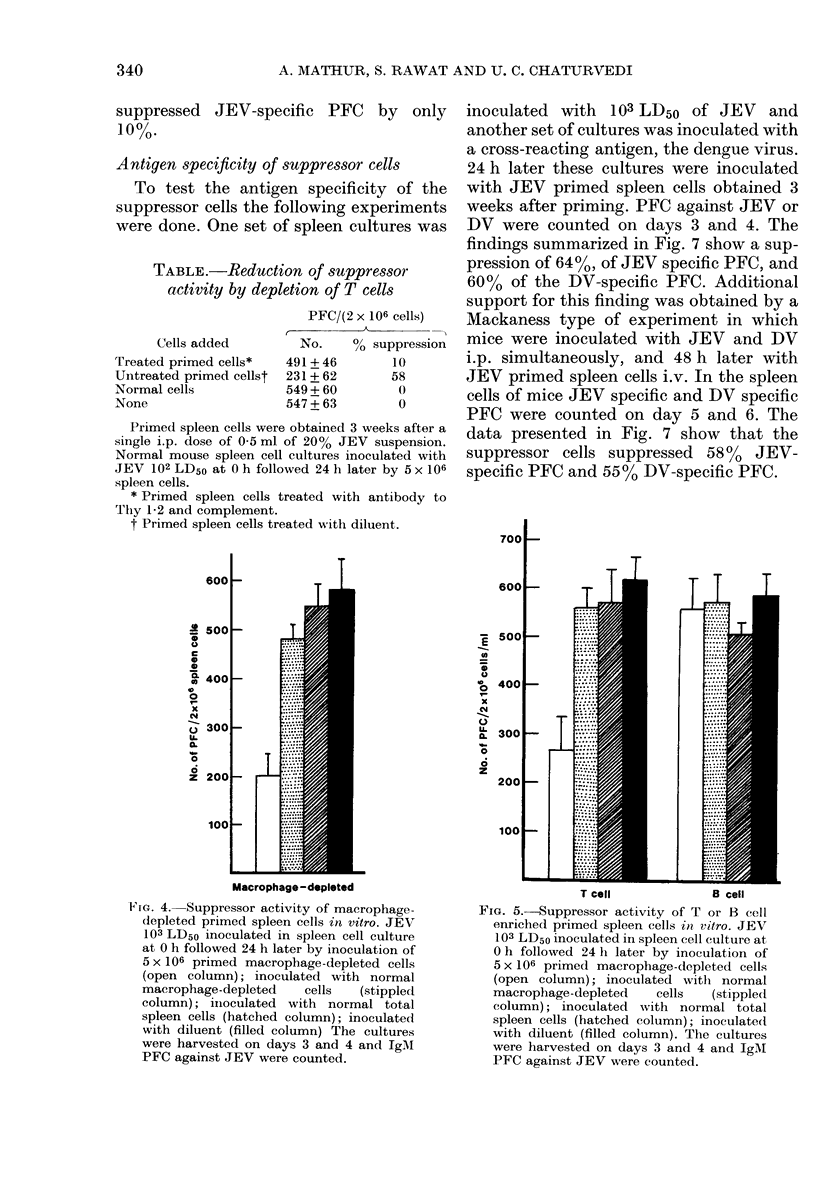
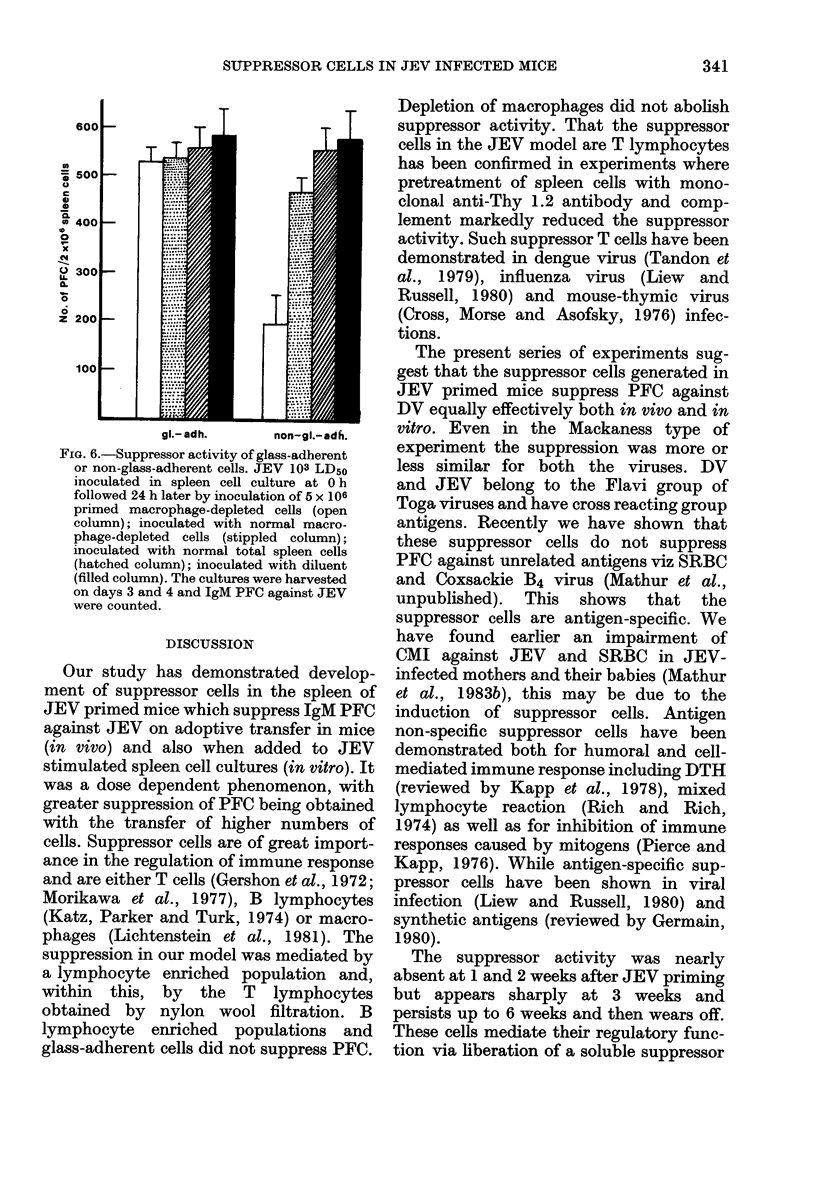
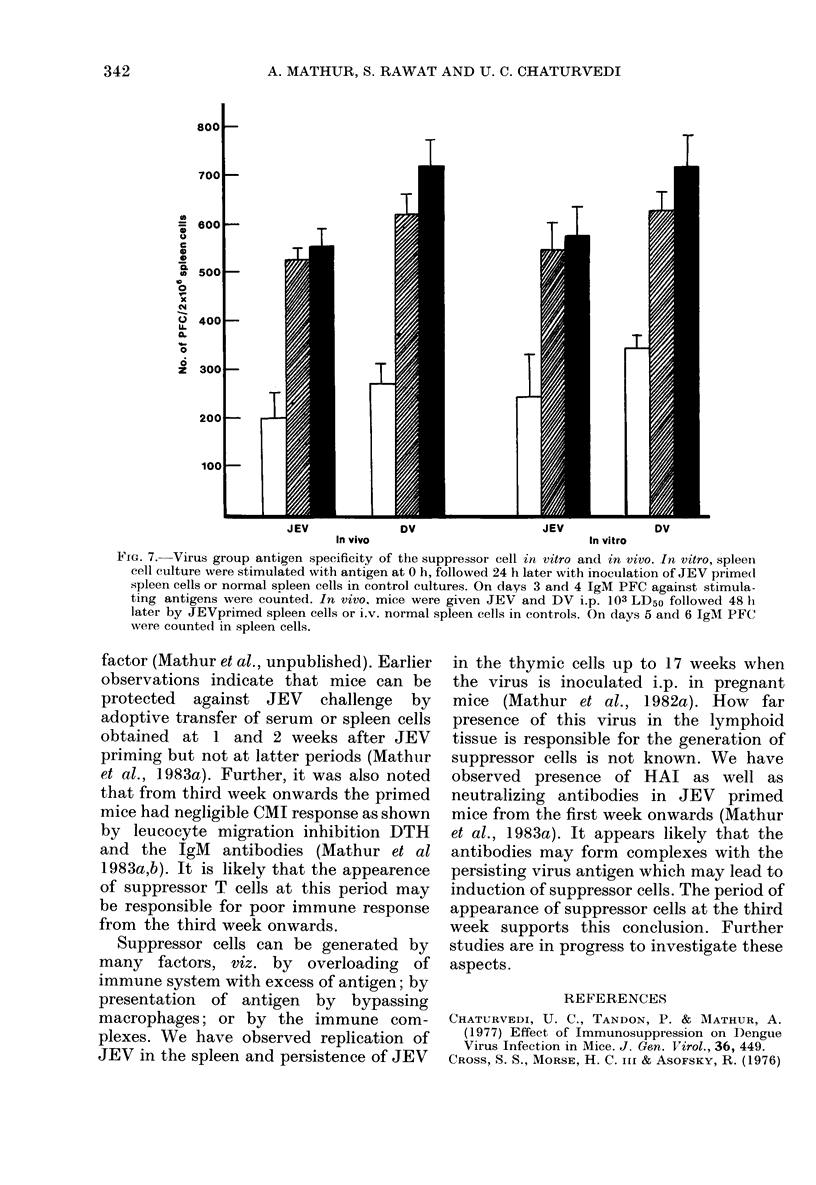
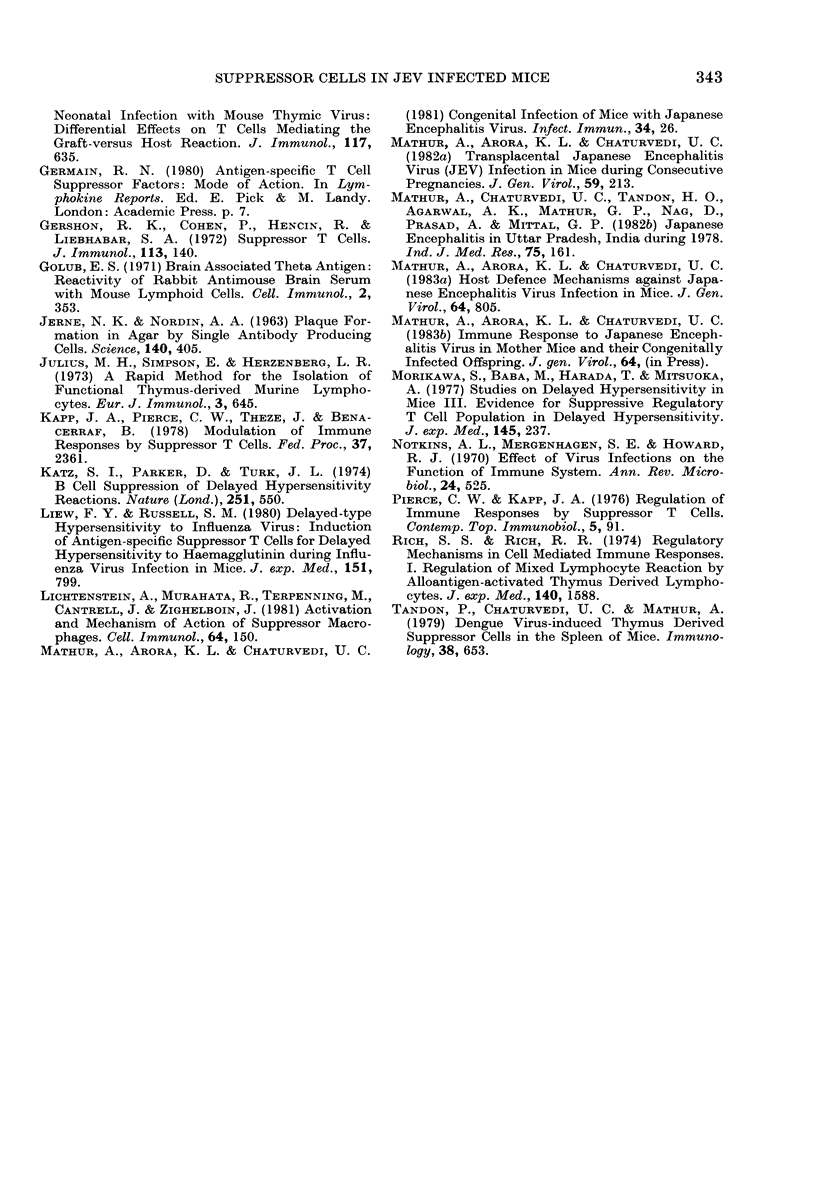
Selected References
These references are in PubMed. This may not be the complete list of references from this article.
- Chaturvedi U. C., Tandon P., Mathur A. Effect of immunosuppression on dengue virus infection in mice. J Gen Virol. 1977 Sep;36(3):449–458. doi: 10.1099/0022-1317-36-3-449. [DOI] [PubMed] [Google Scholar]
- Cross S. S., Morse H. C., Asofsky R. Neonatal infection with mouse thymic virus. Differential effects on T cells mediating the graft-versus-host reaction. J Immunol. 1976 Aug;117(2):635–638. [PubMed] [Google Scholar]
- Golub E. S. Brain-associated theta antigen: reactivity of rabbit anti-mouse brain with mouse lymphoid cells. Cell Immunol. 1971 Aug;2(4):353–361. doi: 10.1016/0008-8749(71)90070-0. [DOI] [PubMed] [Google Scholar]
- Julius M. H., Simpson E., Herzenberg L. A. A rapid method for the isolation of functional thymus-derived murine lymphocytes. Eur J Immunol. 1973 Oct;3(10):645–649. doi: 10.1002/eji.1830031011. [DOI] [PubMed] [Google Scholar]
- Kapp J. A., Pierce C. W., Theze J., Benacerraf B. Modulation of immune responses by suppressor T cells. Fed Proc. 1978 Aug;37(10):2361–2364. [PubMed] [Google Scholar]
- Katz S. I., Parker D., Turk J. L. B-cell suppression of delayed hypersensitivity reactions. Nature. 1974 Oct 11;251(5475):550–551. doi: 10.1038/251550a0. [DOI] [PubMed] [Google Scholar]
- Lichtenstein A., Murahata R., Terpenning M., Cantrell J., Zighelboim J. Activation and mechanism of action of suppressor macrophages. Cell Immunol. 1981 Oct;64(1):150–161. doi: 10.1016/0008-8749(81)90466-4. [DOI] [PubMed] [Google Scholar]
- Liew F. Y., Russell S. M. Delayed-type hypersensitivity to influenza virus. Induction of antigen-specific suppressor T cells for delayed-type hypersensitivity to hemagglutinin during influenza virus infection in mice. J Exp Med. 1980 Apr 1;151(4):799–814. doi: 10.1084/jem.151.4.799. [DOI] [PMC free article] [PubMed] [Google Scholar]
- Mathur A., Arora K. L., Chaturvedi U. C. Congenital infection of mice with Japanese encephalitis virus. Infect Immun. 1981 Oct;34(1):26–29. doi: 10.1128/iai.34.1.26-29.1981. [DOI] [PMC free article] [PubMed] [Google Scholar]
- Mathur A., Arora K. L., Chaturvedi U. C. Host defence mechanisms against Japanese encephalitis virus infection in mice. J Gen Virol. 1983 Apr;64(Pt 4):805–811. doi: 10.1099/0022-1317-64-4-805. [DOI] [PubMed] [Google Scholar]
- Mathur A., Arora K. L., Chaturvedi U. C. Transplacental Japanese encephalitis virus (JEV) infection in mice during consecutive pregnancies. J Gen Virol. 1982 Mar;59(Pt 1):213–217. doi: 10.1099/0022-1317-59-1-213. [DOI] [PubMed] [Google Scholar]
- Mathur A., Chaturvedi U. C., Tandon H. O., Agarwal A. K., Mathur G. P., Nag D., Prasad A., Mittal V. P. Japanese encephalitis epidemic in Uttar Pradesh, India during 1978. Indian J Med Res. 1982 Feb;75:161–169. [PubMed] [Google Scholar]
- Morikawa S., Baba M., Harada T., Mitsuoka A. Studies on delayed hypersensitivity in mice. III. Evidence for suppressive regulatory T1-cell population in delayed hypersensitivity. J Exp Med. 1977 Feb 1;145(2):237–248. doi: 10.1084/jem.145.2.237. [DOI] [PMC free article] [PubMed] [Google Scholar]
- Notkins A. L., Mergenhagen S. E., Howard R. J. Effect of virus infections on the function of the immune system. Annu Rev Microbiol. 1970;24:525–538. doi: 10.1146/annurev.mi.24.100170.002521. [DOI] [PubMed] [Google Scholar]
- Pierce C. W., Kapp J. A. Regulation of immune responses by suppressor T cells. Tohoku J Exp Med. 1976;5:91–143. [PubMed] [Google Scholar]
- Rich S. S., Rich R. R. Regulatory mechanisms in cell-mediated immune responses. I. Regulation of mixed lymphocyte reactions by alloantigen-activated thymus-derived lymphocytes. J Exp Med. 1974 Dec 1;140(6):1588–1603. doi: 10.1084/jem.140.6.1588. [DOI] [PMC free article] [PubMed] [Google Scholar]
- Tandon P., Chaturvedi U. C., Mathur A. Dengue virus-induced thymus-derived suppressor cells in the spleen of mice. Immunology. 1979 Dec;38(4):653–658. [PMC free article] [PubMed] [Google Scholar]


